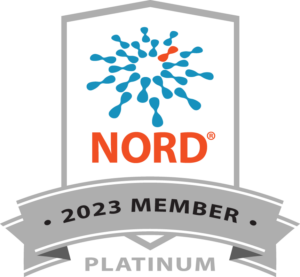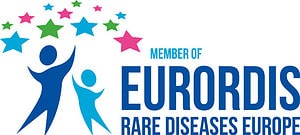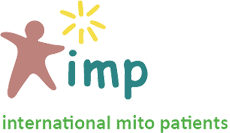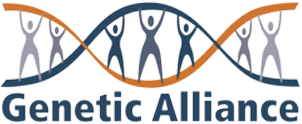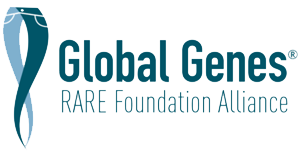Advocacy, Communication, and a Bit of Planning!
Medical emergencies are tough to avoid when living with mito or caring for a child or adult with mitochondrialRelated to the mitochondria. disease. Preparedness is empowering and provides a path for faster and effective care.
Complex, chronic disease is challenging both for the patients/families and for the medical staff in emergency departments, on-call clinics, and covering physicians called upon to treat mito patients in times of crises. Factors that hamper trust and communication include:
- Medical professionals with little experience with mitochondrial disease, creating stress in the patients/families about their care.
- Physicians that resent being told what has/has not worked in the past for a specific patient
- Families who know what has been in the past to treat a specific emergency and want to share that information with medical staff, which is not always received well.
- When the lines of patient/parent/physical become blurred.
- Parent and patients that are under great stress during medical emergencies
- Parents/patients that lose trust in staff who do not know about their/their child’s disease
Effective communication between physicians, and between physicians and patients, is needed for safe and effective care. Patient and families are experts on the specific patient’s past experiences, and the physician is the expert in medicine! Both parties bring great tools to the table and must value each other’s expertise to get the best care. Creating Emergency Care Plans before that emergency hits facilitates effective care with medical staff who may not be familiar with mito in a specific individual.
Steps to Improve Care and Communication in an Emergency:
Create an emergency packet to keep in the cars of all who provide care, in purses and diaper bags, at schools, and on file at local ERs, on-call and other centers frequented for medical crises, as well as at local EMS and Fire companies. Stopping by to get to know emergency responders can be helpful to both the responders and family. Emergency Responders (EMT) are trained to look on home refrigerators and behind car seats for medical information. Entering emergency information onto a computer and keeping that info on a thumb drive and/or emailing the info to others involved in care is an additional option.
Keep in mind that an adult may not be able to speak on his/her behalf and a child may be in the care of a sitter or grandparent who may not know disease details. Emergency packets help speak for the patient’s doctors and medical team, as well as for parents and family members, thus taking some of the pressure off family members during a time a great stress. Family members then have more time to be the mom, dad, or other family support! An emergency packet should include:
- A cover sheet with critical information such as full name, date of birth, barriers to communication, and life-threatening allergies and conditions (latex allergy, deaf, blind, ataxiaImpaired coordination of voluntary muscle movements. Manifestations can include, among others, slurred speech, poor balance, unsteady walking, falling, and involuntary eye movements (nystagmus). Usual, PTSD, etc.)
- Medication list with name of medication, dosage, frequency, and route of administration. Include the reason each medication is needed, who ordered the medication, and when first ordered.
- Allergies list with name of allergen and type of reaction. Include medications, foods, latex, bee and all other known or suspected allergens. Note treatment parameters such as benadryl or epipen for specific levels of symptoms.
- Diagnosis list, include when diagnosis was made.
- Past surgeries with dates, including any complications.
- Any other information that will aid in care, for example, a comfort item, extra need to be kept warm, assistance needed with drinking or eating, etc.
- Physician contact list with names, specialty, address and phone and fax numbers.
- Emergency contact list, including who to contact in case of emergencies – parents, spouses, child, significant other.
- Insurance information with name, address, contact numbers, and ID numbers.
- Other – child at school who may get off the bus to an empty house, or pets at home who may need care.
Emergency Protocols and Directives
The goal of preparing for emergencies is to strengthen communication between the patient and treating medical team and take some pressure off the patient/family to provide an accurate and detailed history during a crisis. To facilitate communication between physicians, the mito doctor and ER doctor, for example, protocols should be included in the emergency packet:
- Emergency Room (ER) Protocol – is a key tool to expedite care in an emergency situation. Since mitochondrial specialists are not typically are available in the ER during times that treatment is needed, it is imperative that the Mito specialist’s instructions be communicated via a protocol letter or letter of medical necessity. A mito doctor, or other doctor familiar with a patient’s medical needs, maps out exactly what steps to take in an emergency for a specific adult or child. A protocol may contain pertinent health history, and needed bloodwork, precautions, and treatments.
- Procedure Protocols –offer basic information on the patient’s specific medical requirements during a procedure, such as surgery with anesthesia, or fasting for medical testing. Information can be found on the MitoAction website at both “Mitochondria and Anesthesia” and “Mitochondrial Toxicity”.
- Health Care Proxy Form/Advanced Directive Forms for both adults and children with severe illness are especially helpful for adult patients who may become unable to express their wishes while critically ill. An adult may designate a person(s) to make medical decisions if they become unable to do. The assigned proxy should understand his/her role to follow the patient’s wishes regarding emergency and life-sustaining care. Parents and/or guardians of children life threatening medical issues also need to discuss what emergency or critical care interventions are best for their child. Discussion on this topic needs to be ongoing, both before and during a crisis. Information on Advance Care Directives for adults can be found here. An overview of the options for children can be found here. Keep a copy of these documents on file with lawyers, PCP, family members, and doctors.
- Wear a Medical Alert bracelet or necklace. The organizations with 24 hour a day phone-in lines can house detailed information, including the information listed above, to be provided to hospitals during an emergency.
- Use your mobile phone to house important medical information. Some phones, like iPhones, can be set up to have medical information available on the home screen without the need to unlock the phone. Others put medical contact information under “ICE” or In Case of Emergency where emergency personal are trained to look. The MyMito App platform is also a great way to have the medical information that a you need available to you anywhere, anytime.
Other Safety Tips – Ideas to Keep Safe and Help Communication in an Emergency!
- Keep tabs on loved one who live alone. Call or text to check in or set up some system for a daily check for safety. A neighbor may be able to help with this step.
- Anyone with ataxia, balance issues, cardiac, or other pressing health need should carry a phone or other device so calls are possible after a fall.
- As age, cognition, and temperament allow, teach children basic safety measures, such as knowing how to use a phone to call 911, or getting an older child/adult to help.
- If you have a child at home who is capable of learning a simple emergency protocol, be sure to practice it with them as a drill. Whether it’s dialing 911, calling a friend, or running to a trusted neighbor, be sure he or she is clear on how to recognize an emergency and knows exactly what to do. Even a child can benefit from education and empowerment to prepare for potential emergencies.
Creating a plan for medical emergencies can ease stress in the ER on many levels! Providing ER staff concise, accurate, pertinent information can expedite care and improve outcome and can reduce patient/family stress that may arise when the staff is unsure how to treat their rare disease.




